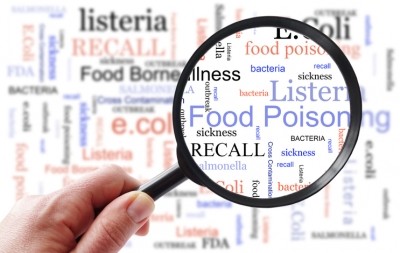Illinois feed mill warned about labeling, cleanliness

The US Food and Drug Administration (FDA) published a warning letter detailing results of an inspection that ran from August through September, 2018, of the Illinois-based feed mill earlier this month.
“The inspection revealed deviations from the current good manufacturing practice (CGMP) requirements for medicated feeds,” the FDA said. “Such deviations cause the medicated and non-medicated animal feeds manufactured at your facility to be adulterated.”
“Furthermore, the inspection revealed deviations for the requirements for veterinary feed directive (VFD) requirements and as a result you are not using your VFD new animal drugs in accordance with their approval,” the agency added. “Therefore, the VFD drug is considered unsafe and the resulting VFD feed is adulterated.”
The feed mill also was asked to address its registration as a drug establishment in the letter, the agency said. However, the topics noted in the warning letter do not present “an all-inclusive statement of violations.”
The feed mill reportedly outlined corrective actions it was planning to take during the inspection, but those will have to be presented in writing and verified during follow-up inspections, the agency said. Alpha also has 15 days to respond following the receipt of the letter.
Adulterated feed
Some of the violations to the veterinary feed directive requirements included that the feed mill failed to collect a written letter from the receiving distributor before sending a VFD feed to another distributor, the FDA said.
“The distribution of a feed containing a veterinary feed directive drug prior to obtaining a written (nonverbal) acknowledgment letter from a receiving distributor (consignee), causes your animal feeds containing a veterinary feed directive drug to be unsafe … and the resulting VFD feed is considered adulterated,” the agency said.
Additionally, the CGMP-related issues found at the feed mill included that some medicated feeds were improperly labeled, the agency said. The master record files for some feed formulas and labels also were provided by “third party animal nutritionists” but were not signed and dated to indicate that the master files had been checked before use.
“During the inspection of your facility on August 23, 2018 through September 28, 2018, FDA Investigators observed the product labels for your Distiller Balancer 1000 RM and 15% Optimizer Creep R90 which contains monensin, and Feedlot 40-20 B500 which contains lasalocid were observed as not being initialed and dated by a responsible individual signifying that they were proofread prior to use,” the agency said. “This is significant because the labeling for the Distiller Balancer 100 RM was observed as lacking the drug declaration for monensin, the drug quantity in the feed, and failed to include the required caution statements including but not limited to the caution statement that monensin ingestion is fatal to horses.”
Some bulk custom medicated feed blends also lacked directions for use, which could allow a medicated feed to be fed at an incorrect rate, the agency said. “Required labeling that provides the user with directions for use must include feeding directions so that the animals receive the drug at the approved rate,” it added.
Some drugs also were not properly stored, handled or controlled, the agency said. A medicated ingredient with an expiration date in June 2018 was found in the feed mill’s drug storage area and was noted as both used in a feed ration and sold directly in July.
Facility review
The warning letter also called attention to the need for maintenance for select areas within the feed mill as the mixer could not easily be entered and related equipment had rusted bolts and broken hinges the FDA said. The mixer reportedly had not been “entered or cleaned” in a 6-year period.
The exterior wall of the cooler for the pellet mill had a hole in it and the cooler chain in the pellet mill, which pulled the conveyor belt, was broken, the agency added.
“The failure to maintain your equipment in a way where it can be cleaned out as necessary may result in animal food adulteration issues, including but not limited to, unsafe drug carryover between batches of animal food,” they agency said.
Additionally, the hand-add grate on the mixer had a 2-inch buildup of molasses and other feed ingredients, the agency said. Feed ingredient residue on the mixer had been noted during previous inspections.
“The failure to maintain equipment in a reasonably clean and orderly manner can allow excessive ingredient build-up to break loose, resulting in unsafe carryover of new animal drugs in subsequent batches of animal food,” the agency added.
In the basement of the feed mill facility, inspectors noted a pile of spilled feed or feed ingredients near the pellet mill that was about 10 feet wide and 4 feet high along with about 12-24 inches of spilled ingredients covering the rest of the floor, the FDA said. The spilled material contained live insects and the facility ceiling was covered with dust and insect webs.
“Failing to maintain your buildings in a reasonably clean and orderly manner can provide harborage to rodents, insects, and other pets which may contaminate the animal food,” the agency added.
There also were improperly stored rodenticides on site, the FDA said. And, facilities and grounds were not maintained in a way to reduce vermin or pest infestations.
During the inspection, investigators noted live rodents in the facility basement, rodent tunnels along exterior walls, birds nesting or roosting in the “bulk load-out and bulk receiving buildings” and a pile of spilled corn that remained in place for at least 30 days, the agency said. “The failure to maintain your buildings and grounds in a way that minimizes pest infestation has resulted in the presence of rodents in your facility in a way that may result in the contamination of animal food,” it added.











